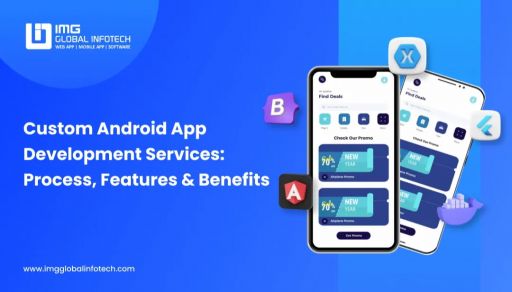React Native Vs Native Apps: A Detailed Comparison Guide
Dipti Singhal
Jul 10, 2025

Choosing the right mobile app development approach can make or break your project’s success. With so many technologies available, the debate between React Native and Native development continues to be a hot topic among startups, enterprises, and tech teams alike.
React Native promises faster development cycles and cross-platform compatibility using a single codebase, making it a popular choice for MVPs and budget-conscious projects. In contrast, Native development, using Swift for iOS or Kotlin/Java for Android offers superior performance, seamless hardware integration, and platform-optimized user experiences.
But which one should you choose between react and react native? In this blog, we’ll dive deep into the React Native vs Native comparison, exploring everything from performance and UI to cost, scalability, and use cases, so you can confidently select the right approach for your next app.
What is React and React Native?
What is React?
React is an open-source JavaScript library developed by Facebook, primarily used for building fast and interactive user interfaces for web applications. It allows developers to create reusable UI components, manage application state efficiently, and build scalable front-end architectures. React's component-based structure and virtual DOM enable high-performance rendering, making it a go-to choice for modern web development.
Popular websites like Facebook, Instagram, and Airbnb rely on React for their dynamic user interfaces.
What is React Native?
React Native, also developed by Facebook, is a cross-platform app development framework that extends the power of React to native mobile apps. Instead of running in the browser like React, React Native uses native components and APIs to render apps directly on iOS and Android devices. This means developers can write most of their code once using JavaScript and React, and deploy it across both platforms with near-native performance.
In essence, React Native bridges the gap between web and mobile app development, offering the flexibility of JavaScript with the feel and function of native apps. It's used by leading brands like Facebook, Walmart, and Bloomberg for mobile development.
React Native vs Native: In-Depth Comparison

1. Development Time
-
React Native:
React Native significantly reduces development time thanks to its “write once, use everywhere” approach. Developers can reuse up to 90% of the code across iOS and Android app development, which streamlines project timelines. Features like hot reloading and a large set of pre-built components further accelerate the development process. It’s ideal for startups or businesses looking to launch MVPs quickly.
-
Native:
Native development involves separate codebases for Android and iOS app development. Developers must write, test, and debug two independent applications, which naturally takes more time. Additionally, native apps require platform-specific expertise, leading to longer onboarding and development cycles, especially for feature-rich or highly customized apps.
2. Mobile App Development Cost
-
React Native:
One of React Native’s biggest advantages is cost efficiency. Since a single team can handle both platforms, overall development expenses are lower. Maintenance and future updates are also easier and more affordable due to a unified codebase. For businesses with limited budgets or looking to validate their product idea, React Native offers a great balance between cost and functionality.
-
Native:
Native apps require separate teams for iOS and Android, which means higher costs for development, QA, maintenance, and upgrades. Custom feature integrations, complex animations, and native SDKs may further increase the budget. However, for long-term, large-scale apps, this investment often pays off in performance and scalability.
3. Performance
-
React Native:
React Native delivers near-native performance in most cases. For general-purpose applications like social media, eCommerce, or content apps, performance is seamless and responsive. However, apps requiring real-time processing, heavy animations, or AR/VR might show limitations due to the reliance on the JavaScript bridge that connects with native components.
-
Native:
If performance is your top priority, native development is the clear winner. It gives developers direct access to device memory, CPU, GPU, and advanced APIs, ensuring uncompromised speed and responsiveness. Native apps are better suited for gaming, complex animations, multimedia processing, or applications with high concurrency.
4. Long-Term Scope
-
React Native:
React Native is evolving rapidly with continuous contributions from Meta (Facebook) and the open-source community. Its modular architecture and rising popularity make it a strong contender for future-ready apps. However, it's still reliant on native bridges and may lag behind in adopting new OS features immediately after iOS or Android releases major updates.
-
Native:
Native platforms are maintained and updated directly by Apple and Google, which means developers get first access to the latest features, updates, and tools. If your app roadmap includes advanced integrations, platform-specific innovations, or long-term scalability, native development provides a more future-proof foundation.
5. API and Third-Party Support
-
React Native:
React Native offers a growing ecosystem of third-party libraries and plugins. Most common APIs are readily available, and if not, developers can write custom native modules. However, some native APIs may not have direct support and require bridging, adding complexity and increasing testing requirements.
-
Native:
With native development, you get direct access to all SDKs, APIs, and hardware features without workarounds. Integration with wearables, smart home devices, payment gateways, and sensors is seamless. It’s ideal for apps that rely heavily on platform-specific APIs or hardware-level features.
6. UI/UX Experience
-
React Native:
React Native tries to replicate native design patterns using components like View, Text, and TouchableOpacity. While this works well for most apps, minor platform-specific UI behaviors can be lost without additional customization. Achieving perfect native-like interactions across both platforms may require conditional rendering and additional styling effort.
-
Native:
Native apps have the upper hand when it comes to UI/UX. Developers can implement precise, platform-specific animations, gestures, and transitions that align with Apple’s Human Interface Guidelines and Google’s Material Design. The result is a smoother, more intuitive user experience that feels native to each platform.
7. App Security
-
React Native:
React Native apps are built using JavaScript, which is inherently more vulnerable to threats like code injection and reverse engineering. While there are libraries to enhance security, sensitive data handling or compliance-heavy applications (like banking or healthcare) may need extra native modules and encryption layers to meet security standards.
-
Native:
Native apps allow deep integration of platform-level security features, including biometric authentication (Face ID, fingerprint), secure data storage, and hardware-backed keychains. For enterprise-grade apps where data protection is non-negotiable, native development offers stronger and more reliable security measures.
8. App Maintenance
-
React Native:
Maintenance is simpler and more centralized in React Native. Bug fixes, feature updates, and UI changes can be rolled out across both platforms with minimal effort. Shared code reduces duplication and versioning issues, which is beneficial for teams with limited bandwidth or tight release cycles.
-
Native:
Native app maintenance requires updating and testing two codebases separately. Any change or bug fix must be implemented twice, once for iOS and once for Android. This can increase turnaround time and operational costs, especially when frequent updates or new features are planned.
When to Choose React Native?
React Native is a powerful framework, but like any technology, it shines brightest in the right context. Here are the most suitable situations where choosing React Native app development makes strategic and practical sense:
1. You Need a Cross-Platform App
If your goal is to launch your app on both iOS and Android simultaneously, React Native is a smart choice. Its single codebase approach allows developers to build once and deploy everywhere, reducing mobile app development time, effort, and cost significantly.
2. You're Building an MVP or Prototype
For startups and product teams looking to validate an idea quickly, React Native enables rapid development and faster iteration cycles. You can launch a fully functional MVP, gather user feedback, and improve the app without investing in two separate native codebases.
3. Budget and Time Are Limited
React Native is ideal for businesses that need to maximize output with limited resources. Since it reduces the need for two dedicated native teams, development and mobile app maintenance costs are lower, making it a great option for cost-sensitive projects.
4. Your App Has Standard UI and Moderate Complexity
Apps with simple to moderately complex user interfaces, such as eCommerce, social networking, or content-based apps perform well on React Native. As long as the app doesn’t require highly customized animations or advanced platform-specific features, React Native can deliver excellent results.
5. You Want Faster Updates and Easy Maintenance
Thanks to the shared codebase, updates and bug fixes can be rolled out across platforms quickly and simultaneously. This makes React Native a great choice for teams seeking agile development and long-term maintainability.
6. You Already Have a Web App Built with React
If your product is already built using ReactJS for the web, transitioning to React Native for mobile development is seamless. Your dedicated development team for hire can reuse logic, components, and skills across platforms, creating a more cohesive development workflow.
7. Your App Requires Moderate Native Features
While React Native does allow access to native modules, it's best suited for apps that require limited hardware integration like GPS, camera, push notifications, or basic sensors. For apps needing heavy real-time data, 3D graphics, or OS-specific APIs, full native may be better.
When to Choose Native App Development?
While cross-platform frameworks like React Native offer speed and cost benefits, native app development remains the gold standard for apps that demand performance, scalability, and advanced platform capabilities. Here’s when going native is the right move for your business:
1. You Need High Performance and Speed
Native development is ideal for apps that require intensive processing, fast load times, or real-time interactions, like gaming apps, video streaming platforms, or apps with complex animations and transitions. Native code has direct access to the device’s CPU, GPU, and memory, ensuring optimal performance without compromise.
2. Your App Demands Platform-Specific Features
When your app needs deep integration with OS-level APIs, sensors, or hardware-specific features, like Bluetooth, ARKit, Face ID, or background geolocation native development provides direct and unrestricted access to all platform capabilities without relying on third-party bridges or wrappers.
3. You’re Targeting a Platform-Specific Audience
If your user base is heavily skewed toward one platform (iOS or Android), or you're building a platform-exclusive app (e.g., an Apple Watch app or Android TV app), going native helps you fully optimize for the user experience on that specific platform.
4. Your App Requires Top-Tier Security
For applications handling sensitive user data, such as fintech, healthcare, or enterprise apps, native development offers stronger, built-in security mechanisms. You can implement features like secure keychains, biometric authentication, and advanced encryption directly using official SDKs.
5. You Want the Best Possible UI/UX
Native development allows you to deliver a flawless user experience that adheres perfectly to the platform’s design principles, like Apple’s Human Interface Guidelines or Google’s Material Design. If UI polish, custom gestures, or transitions are crucial to your brand experience, native is the best fit.
6. Long-Term Scalability and Reliability Is Critical
If you're building a mobile app that’s part of a long-term product roadmap, native development provides better stability, scalability, and future-proofing. It ensures quicker access to new OS features and updates, helping your app stay competitive as platforms evolve.
7. You Have the Budget and Time for Separate Codebases
Unlike cross-platform app development approaches, native development requires dedicated teams for each platform, which increases the overall mobile app development cost and timeline. But if resources allow, this investment pays off in customization, reliability, and performance.
Conclusion: React Native vs Native
Choosing between React Native vs Native app development ultimately depends on your project’s goals, budget, timeline, and technical requirements.
If you're looking for faster development, reduced costs, and cross-platform compatibility, React Native is an excellent choice, especially for startups, MVPs, and businesses aiming to reach both iOS and Android audiences with a shared codebase.
On the other hand, if your app demands top-tier performance, advanced native features, platform-specific UI/UX, or enterprise-grade security, going Native is the more strategic long-term investment. It provides deeper access to device APIs, better user experience, and stronger scalability for complex applications. The key point is to consider your product vision, feature requirements, and user expectations and choose the technology that best aligns with your business strategy.
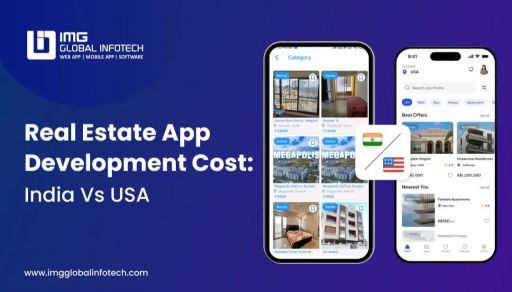 Real Estate App Development Cost 2026: India vs USA
Real Estate App Development Cost 2026: India vs USA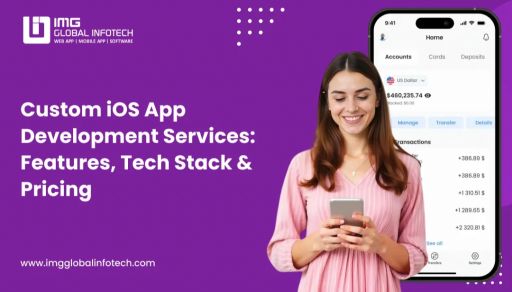 Custom iOS App Development Services: Features, Tech Stack & Pricing
Custom iOS App Development Services: Features, Tech Stack & Pricing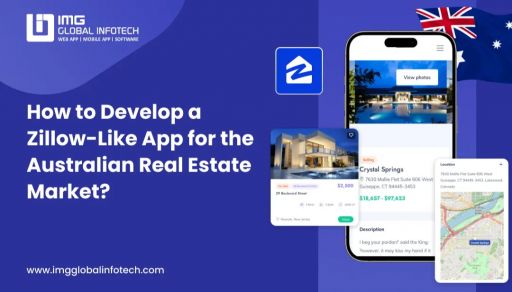 How to Develop a Zillow-Like App for the Australian Real Estate Market?
How to Develop a Zillow-Like App for the Australian Real Estate Market? Top Machine Learning Development Trends Shaping the Future
Top Machine Learning Development Trends Shaping the Future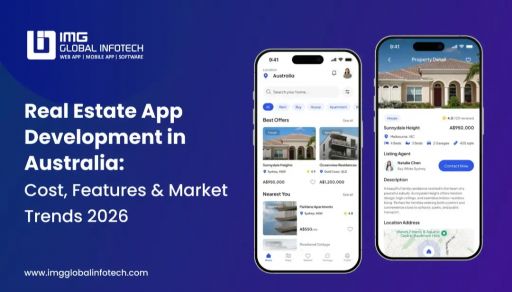 Real Estate App Development in Australia: Cost, Features & Market Trends 2026
Real Estate App Development in Australia: Cost, Features & Market Trends 2026
Dipti Singhal is a skilled Content Writing Specialist at IMG Global Infotech, with strong expertise in creating engaging, SEO-optimized content for various industries. She focuses on blending storytelling with effective keyword strategies to help businesses connect with their audience and improve their online visibility. Passionate about delivering high-quality content that drives real results, Dipti plays an essential role in strengthening the company’s digital presence.



